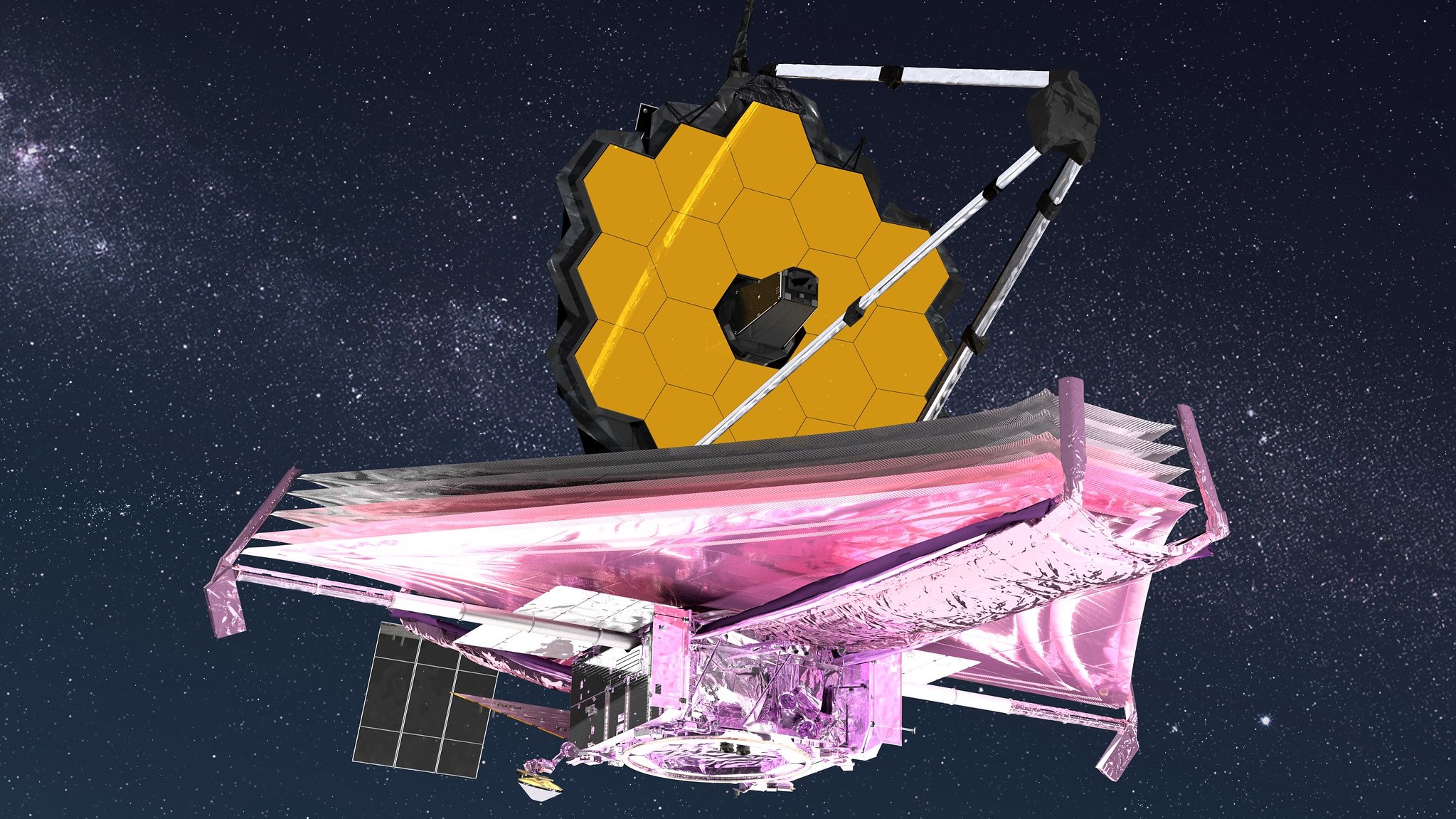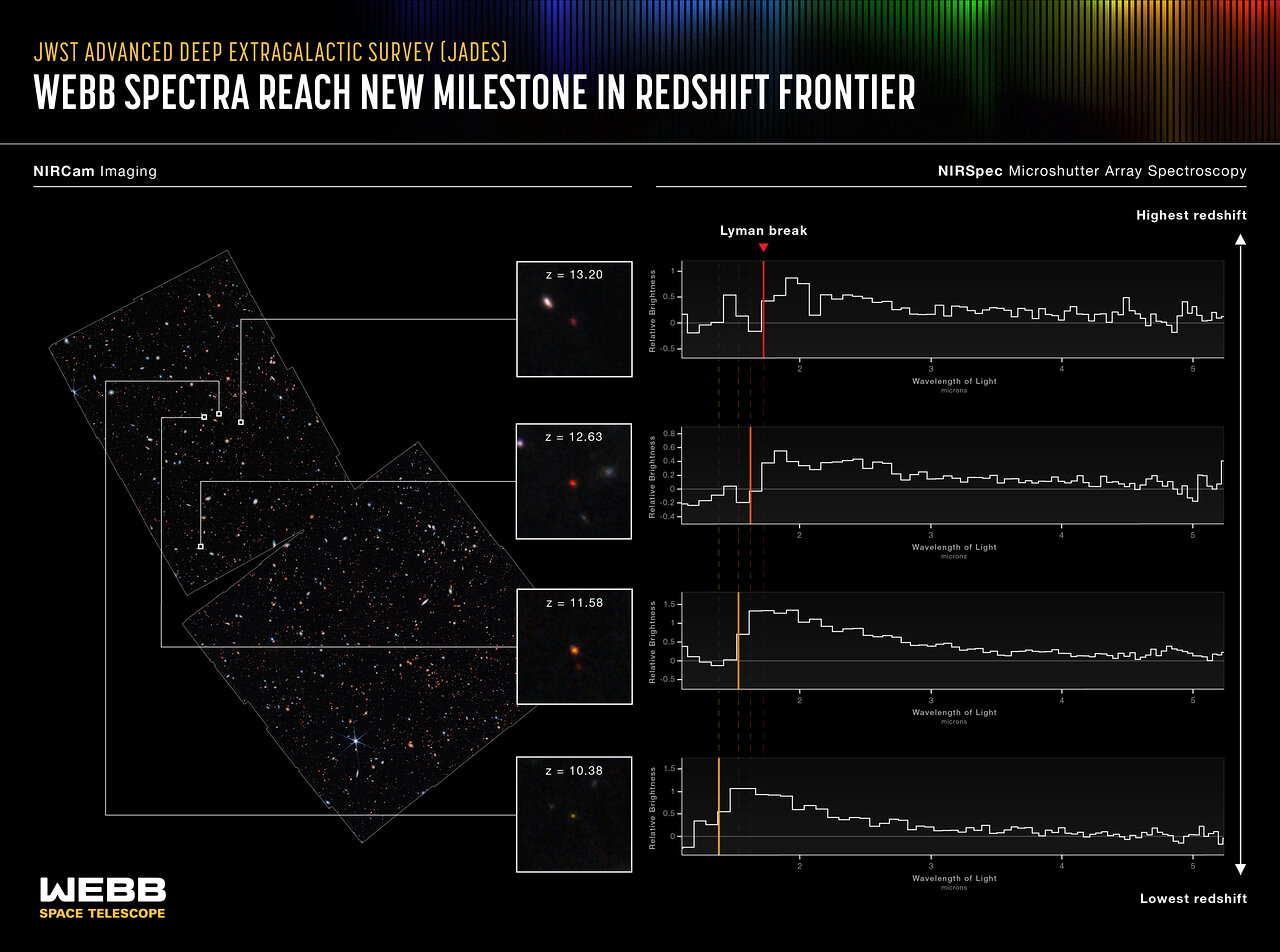
The James Webb Space Telescope (JWST) has clapped eyes on the most ancient galaxies ever observed.
Astronomers are now confident that the light from these galaxies has been traveling to Earth for over 13.4 billion years, two new studies report. The results show that these galaxies inhabited the universe when it was less than 350 million years old and demonstrate the rapid emergence of the first generations of galaxies.
"It was crucial to prove that these galaxies do, indeed, inhabit the early universe. It's very possible for closer galaxies to masquerade as very distant galaxies," Emma Curtis-Lake, a co-author of one of the new studies and an astronomer at the University of Hertfordshire in England, said in a statement.
"Seeing the spectrum revealed as we hoped, confirming these galaxies as being at the true edge of our view, some further away than Hubble could see! It is a tremendously exciting achievement for the mission," Curtis-Lake said.
Related: James Webb Space Telescope: Everything you need to know

The discovery confirms JWST's ability to perform one of its most important tasks — studying the early universe via light that has been traveling for so long that the expansion of the universe has stretched its wavelength. This stretching of light is called redshift; the longer the light travels, the further toward the red end of the electromagnetic spectrum the expansion of the universe shifts its light. This means that redshift can be used as a measure of distance, and that early galaxies should have light displaying extreme redshifts, with their light stretched all the way into the infrared range — JWST's specialty.
Thus far, the $10 billion observatory has identified several extremely high-redshift candidate galaxies, but these observations have to be confirmed using spectroscopy.
Spectroscopy can be used to make the distinction between early galaxies and closer, more contemporary galaxies that might share similar properties, because spectroscopy can spot the characteristic fingerprints of specific elements. Early galaxies are composed of mostly hydrogen and helium, lacking heavier elements like oxygen, nitrogen and carbon. This is because they have not yet been enriched by the heavy elements forged by stars via nuclear fusion and then dispersed when these stars die and go supernova.
The researchers' analysis of data collected from JWST's near-infrared camera (NIRCam) and Near-Infrared Spectrograph (NIRSpec) instrument allowed them to determine that the four galaxies designated JADES-GS-z10–0, JADES-GS-z11–0, JADES-GS-z12–0, and JADES-GS-z13–0 do indeed have extreme redshifts, of 10.3 to 13.2. (JADES, by the way, stands for "JWST Advanced Deep Extragalactic Survey.")
They came to this conclusion because the spectra from these galaxies lack the telltale signature of heavy elements like carbon, meaning JWST is seeing them as they were when the universe was just 300 to 500 million years old. (The universe is currently about 13.8 billion years old.)
"For the first time, we have discovered galaxies only 350 million years after the Big Bang, and we can be absolutely confident of their fantastic distances," co-author and NIRCam science team member Brant Robertson said in the statement. "To find these early galaxies in such stunningly beautiful images is a special experience."
The observations come from the first round of JADES observations, which were directed toward a tiny area of the sky known as the Ultra Deep Field that has been investigated for around two decades by the Hubble Space Telescope. This patch of sky contains around 100,000 galaxies, each caught at some moment in its history, potentially billions of years in the past.
The researchers used over 10 days of JWST mission time to study the Ultra Deep Field with NIRCam, observing it in nine different infrared colors. This was followed by 28 hours of data collection conducted by the NIRSpec instrument over three days. JWST therefore delivered exceptionally sensitive and sharp images of the region and also provided astronomers the data they needed to get a precise measurement of each galaxy's redshift and reveal the properties of the gas and stars within each one.
"These results are the culmination of why the NIRCam and NIRSpec teams joined together to execute this observing program," said NIRCam principal investigator Marcia Rieke of the University of Arizona.
The two papers were published today (April 4) in the journal Nature. The researchers first reported the results in December 2022, when they presented them at a conference.
Follow us on Twitter @Spacedotcom and on Facebook.







